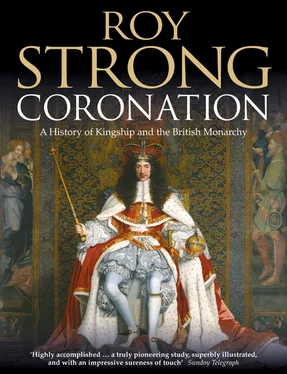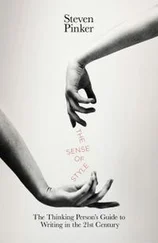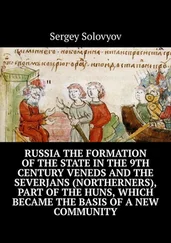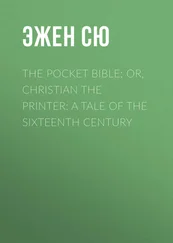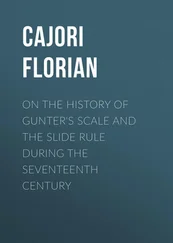1 ...8 9 10 12 13 14 ...30 The papacy, realising the threat this embodied, in the eleventh century began to draw back from the endorsement of theocratic kingship. The sacraments were codified and reduced to being seven in number, with royal unction not among them. The whole pressure was to downgrade the very idea of the priest-king, and early versions of the Third Recension record the withdrawal of the use of chrism for the anointing of the king’s head, replacing it with the anointing of several parts of his body with ordinary holy oil. Chrism was in fact to creep back into use later, but its removal for a period was significant. 9
The Third Recension is, therefore, a crucial document in which the Church redrew the boundaries that differentiated the laity from the clergy. The battle which ensued centred, as I have said, on the removal of the king’s right to invest his ecclesiastical dignitaries with office and was to dominate the twelfth century. Under Henry I, one of the most powerful of the Angevin kings, Archbishop Anselm was driven into exile and so, even more famously, was Thomas Becket under the first Plantagenet, Henry II. The struggle between him and the king was to produce the most extreme claims for theocratic kingship, ones which based the royal control of the Church on the anointment of the king with chrism. The significance of that was caught in the royal style. Before the Coronation the king was only Dominus. After, at least from the reign of William II, he was ‘King by the Grace of God’.
The author known as Anonymous of York but probably William Bonne-Ame, later Archbishop of Rouen, who wrote what is referred to as Tract 24a, succinctly sums up how the supporters of the king as Christus Domini saw the monarchy:
kings are consecrated in God’s church before the sacred altar and are anointed with holy oil [he means chrism here] and sacred benediction to exercise ruling power over Christians, the Lord’s people … the Holy Church of God … as one who has been made God and Christ through grace … wherefore he is not called a layman, since he is the anointed of the Lord [Christus Domini] and through grace he is God. He is the supreme-ruler, the chief shepherd, master, defender and instructor of the Holy Church, lord over his brethren and worthy to be ‘adored’ by all, since he is the chief and supreme prelate. 10
Such were the breathtaking claims made on behalf of Henry II, stemming from what was enacted at his Coronation as performed according to the Second Recension. This was an appeal back to the mystique and magic of the old pre-Conquest Anglo-Saxon monarchy. By the time that this tract was being written theocratic kingship was, in fact, in retreat and Becket’s murder had dealt the final blow.
The investiture controversy and the redefinition of the lay and clerical spheres provide the backcloth prompting the Third Recension. That incorporated several other changes. One was the enhanced status accorded the crown, which was blessed, a ritual derived from one used at the Coronation of the Byzantine emperors. There was also a multiplication of robes and regalia. Armils or bracelets, which had an Old Testament precedent, appear together with a royal mantle whose four corners signify the four corners of the world subject to God. The mantle does appear, in fact, in a late manuscript of the Second Recension but it is universal in the third. In the latter the investiture with the ring and crown is reversed and there are some notable enhancements to the ritual, with the king being blessed after crowning and then solemnly enthroned in state to the splendour of the Te Deum being sung.
There is also a notable enhancement of the status of the queen, delineating clearly the nature of medieval queenship. 11 This is the first ordo which works from the premise that her Coronation is an action directly parallel with that of her husband. The queen is twice blessed, first on entering the church and again at the altar. The prayer said over her was taken almost word for word from that said over a newly ordained abbess. Here she is cast as an exemplar of female chastity, as the mistress of the royal household and, as signified in her investiture with a ring as a symbol of faith, a support to the Church, a patron of missionaries and a leader of her household’s spirituality.
The only full account of a Coronation definitely using this ordo before 1200 is that of Richard I in 1189. Of the seven others, including that of Henry the Younger, we know little, although it is clear that the twelfth century saw enormous change and development. When, at last, we do get a full-length eyewitness account it is of a major spectacle of state, which leaves one wondering how far what is described happened earlier during that century. The twelfth century, after all, was one of the greatest eras in the history of the country, and the increasing power and grandeur which surrounded the monarchy is likely to have been reflected in the rite of Coronation. The brilliant if hot-headed Henry II ruled over a vast continental empire, the greatest in Western Europe since Charlemagne. And even though his two sons, Richard I, the crusading troubadour king who was only in England five months out of a ten-year reign, and the feckless John, who opened a chasm between himself and the magnates, threw this inheritance away, there is no doubt that the English monarchy was still regarded as one of the grandest in Western Europe.
We can trace that progressive rise in grandeur in several different ways. One is in the development of Westminster as a royal enclosure or preserve. The elements of this were already in place in 1066 but they were to be consolidated during the century and a half which followed. 12 Although nothing is known of Edward the Confessor’s palace, in 1097 work was underway on a new great hall for William II, who was to hold his first court there in 1099. That vast hall is still there, exactly the same in size as it was when first built, 240 feet long and 67 feet 6 inches wide, by far the largest hall in England and, probably, in Western Europe at the time. If the Abbey was seen to reflect imperial aspirations surely this was its secular counterpart. It was built deliberately to house the great feasts which followed the Coronation and as the setting for the ritual crown-wearings which punctuated the court year, in which the ruler displayed himself as the image of Christ on earth to his magnates.
Recent research has pointed out that one of the ordo’s prayers of blessing, opening with the word Prospice, includes the following words: ‘Grant that the glorious dignity of the royal hall [palatium] may shine before the eyes of all with greatest splendour of kingly power and that it may seem to glow with the brightest rays and to glitter as if suffused by illumination of the utmost brilliance.’
From the outset this was not a hall of the usual Norman type, for the main entrance was placed at the northern end in order to establish a processional route which was directly to the enthroned monarch at the opposite side. The upper walls were lighted by Romanesque windows set into an arcaded wall gallery. The vast size of this structure demonstrated at a stroke that this was to be the secular ceremonial centre of the Anglo-Norman kingdom. The palace itself continued to expand. In 1167 there is reference to a ‘new hall’, a small one for domestic purposes sited roughly in line with the great one but further east. Jutting out at right angles from that was the great chamber which already, by the twelfth century, was for the king’s private use. The Norman and the Angevin kings contrived to be migratory through their vast English and French domains and it was only gradually that their Westminster palace began to establish its primacy. All through the reign of Henry II the various organs of government, as they became ever more complex, began to find a permanent home amidst this ever-expanding palace. The Court of Audit held its biennial sessions here, and under John the royal treasury ceased to be at Winchester. For over four centuries the palace was to combine the demands of a royal residence with those of the major offices of state. Only in 1512 was this to change when Henry VIII left Westminster eventually for Whitehall.
Читать дальше
